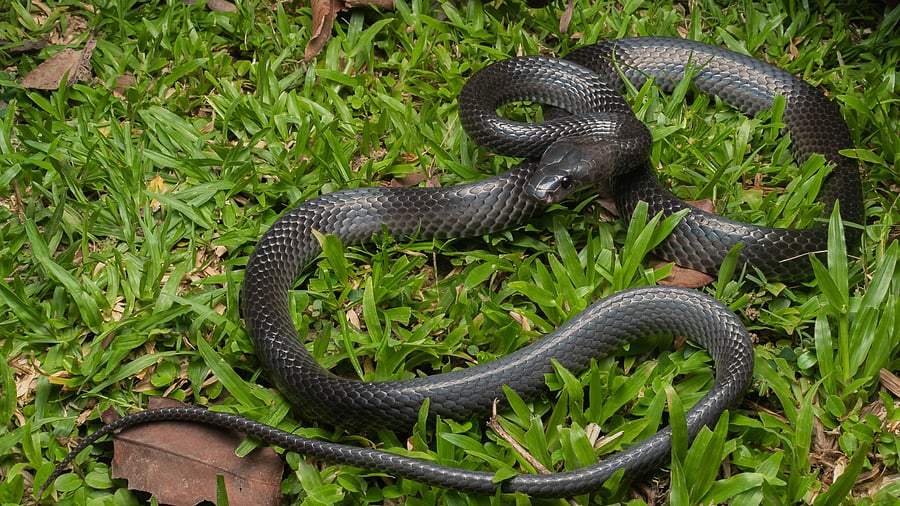
The species, named Lycodon irwini, had remained unrecognised for years.
Credit: Special Arrangement
Hubballi/Sri Vijaya Puram: Scientists have confirmed the discovery of a new species of wolf snake from Great Nicobar, solving a long-standing taxonomic puzzle in the Andaman and Nicobar Islands.
The species, named Lycodon irwini, had remained unrecognised for years because it closely resembled a widespread wolf snake found elsewhere in the region.
The discovery was made by researchers R S Naveen and S R Chandramouli of Pondicherry University, Zeeshan A Mirza, a biologist at the Max Planck Institute for Biology in Tubingen, Germany, and Pune-based photographer Girish Choure. Their findings are published in the international journal Evolutionary Systematics.
This species of snake has been sighted only four times so far. However, the field observations suggested clear inconsistencies when compared with known wolf snake species. This prompted a detailed reassessment. The team compared the Great Nicobar specimens with museum material across Europe and the United States and carried out DNA analysis to understand its evolutionary relationships. The genetic results confirmed that the Great Nicobar population is distinctly separate, establishing Lycodon irwini as a new species.
Adults of the species grow to about a metre and have a uniform, glossy-black appearance without the pale bands or patterns typical of related wolf snakes. Researchers also documented a higher count of belly and tail scales. All confirmed sightings so far come from moist evergreen forests near Gandhi Nagar in Great Nicobar.
Given its extremely narrow known range and potential threats from habitat disturbance, the authors recommend treating the species as Endangered under the International Union for Conservation of Nature (IUCN) criteria until a formal assessment is undertaken. The snake has been named in honour of the late Australian conservationist Steve Irwin.
Speaking about the significance of the discovery for the Andaman and Nicobar Islands, Mirza said the findings highlight how the region's fauna has evolved in isolation. "Islands usually acquire most of their biota from neighbouring large land masses. Similarly, A&N is said to have acquired much of its biota from Burma or Sumatra. However, findings like the new wolf snake, which shows affinity with Southeast Asian species, indicate that even if the biota arrived from elsewhere, they have evolved independently and represent distinct species that require conservation attention," he said.
A DNA-based reassessment of all snakes and lizards of the islands is necessary. I look forward to working with the Forest Department to explore and document the biodiversity of the islands, he added.
"This is just the beginning of a series of new discoveries from the islands. Naveen and Chandramouli added crucial data from their observations, and I examined specimens across European and American museums. Our study confirmed this species as a new discovery," Zeeshan noted.